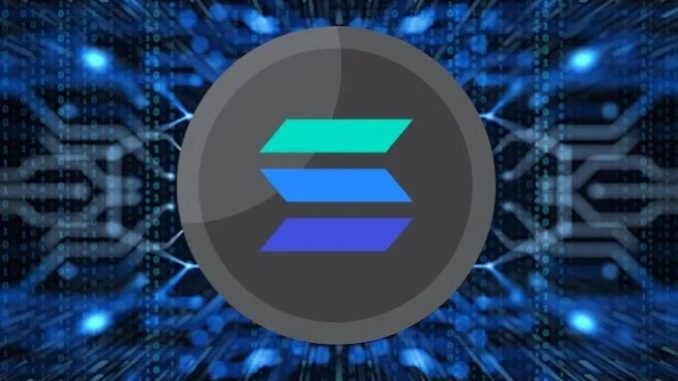
An ambitious new investment thesis from crypto-focused venture firm Multicoin Capital claims that Solana—currently a dominant $100 billion blockchain ecosystem—could eventually “outperform the major traditional finance (TradFi) players,” including NYSE, NASDAQ, and CME. The 17-minute read, published by Multicoin Capital Co-Founder Kyle Samani and titled “The Solana Thesis: Internet Capital Markets,” outlines in detail why the firm believes SOL can capture value from every layer of the global financial stack.
How Solana Could Topple NYSE And NASDAQ
Multicoin Capital has been a supporter of Solana since its seed round in May 2018. Noting that the network has become “the fastest-growing developer ecosystem” while surpassing “Ethereum on most major on-chain metrics (trading volumes, daily active addresses, REV, TEV, DePIN payments, etc.),” Samani describes the newly released thesis as the firm’s fifth major SOL-focused essay.
“Now that Solana is a $100B asset… we wanted to share our thoughts on how we’re underwriting SOL for strong returns even above $100B market cap,”Samani writes.
Multicoin’s core argument is that Solana’s architecture can reduce user fees by 90% to 99%—yet also enable the ecosystem to capture a market cap that surpasses many TradFi incumbents. Samani contends that while conventional stock exchanges capture fees solely for trading services, Solana’s decentralized nature allows it to accrue additional revenue from multiple financial protocols built atop its network.
In the thesis, Samani stresses that the direct fee revenue from payments is not the real prize. Although the near-zero cost of a SOL transaction (roughly $0.001 per transaction) makes it attractive to merchants and consumers, these fees pale in comparison to high charges on mainstream money-movement systems.
“Still, he sees payments as a crucial vector for growth: “Payments are important for driving adoption… they are inherently viral,” Samani says.
According to the report, a viral-like spread of wallet usage occurs whenever people transact with each other, making everyday payments a powerful tool for onboarding new users. This, in turn, drives more liquidity and volume toward the core DeFi applications responsible for generating the bulk of profits.
Samani highlights conditional liquidity (CL)—pioneered by DeFi platform DFlow on Solana—as a vital breakthrough. CL allows market makers (MMs) to offer tighter spreads by ensuring that only “non-toxic” order flow, generally from trusted front-end partners, can tap into this liquidity.
“CL is a nascent concept… we expect it will become the dominant paradigm for quoting liquidity on-chain,” Samani writes. This practice mirrors established TradFi approaches, such as those used by Robinhood and its market-making partners. The biggest potential impact is more favorable pricing for regular users, bridging one of the largest efficiency gaps between centralized and decentralized exchanges.
Samani argues that Solana’s upcoming Multiple Concurrent Leaders (MCL) framework—where several nodes simultaneously produce blocks—will let global participants incorporate market-moving information more quickly. Unlike a single exchange server in one physical location, MCL spreads leadership across the network, reducing latency for those far from legacy finance hubs. In principle, this system should enable decentralized price discovery to outperform centralized matching engines.
Samani envisions Solana’s role not just as a “decentralized NASDAQ” but as a global platform for all financial services—from derivatives and lending to real-estate tokenization and traditional equities.
“Virtually all assets will trade on inherently global and permissionless systems like Solana, eventually,” Samani posits. He also highlights the potential for entirely novel asset classes to emerge, such as fractionalized real estate—exemplified by projects like Parcl—or tokenized bottles of whiskey and collectible watches. This places Solana in a prime position to host the trading and management of all forms of tokenized value.
A key focus is how blockchains like Solana capture revenue through maximum extractable value (MEV)—the value validators or miners can glean from the ordering of transactions. With an expanding array of financial protocols and capital markets running on-chain, Samani claims MEV will be the primary revenue driver.
“Solana itself is not providing financial services. But Solana creates the stack that powers hundreds… of financial services… And while gas costs are near 0… Solana directly profits from the growth of these financial services via maximum extractable value (MEV),” Samani argues.
According to the thesis, the Solana network earned more than $800 million in “REV” (revenue minus token inflation) during the last quarter of 2024, up from nearly zero one year prior. That figure translates to an annualized rate of $3.2 billion—an impressive jump, considering few traditional assets are yet on-chain and many DeFi protocols on Solana remain in early stages.
In concluding the thesis, Samani asserts that Solana’s decentralized infrastructure can ultimately overtake incumbent exchanges by delivering:
Lower fees and enhanced liquidity,
Faster transaction finality across global markets,
Support for a vast range of tokenized assets,
New financial products that are entirely composable,
A frictionless platform for permissionless development
“There is an incredible opportunity to create a global and permissionless financial system… That is the vision for Internet Capital Markets. That is the vision for Solana,” Samani writes.
Multicoin’s bet is that Solana’s continuing expansion will create a tidal wave of innovation that legacy venues—NYSE, NASDAQ, CME, and major payment networks—simply cannot replicate with their closed architectures. Whether this grand ambition fully materializes will depend on regulatory adoption, technological evolution, and whether mainstream finance will embrace the next generation of on-chain solutions.
At press time, SOL traded at $249.50.
Featured image created with DALL.E, chart from TradingView.com





Be the first to comment